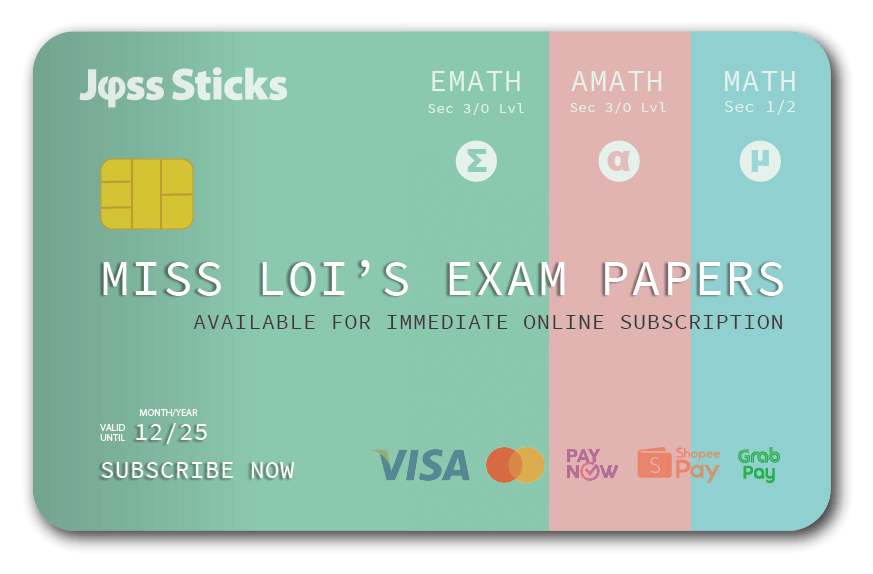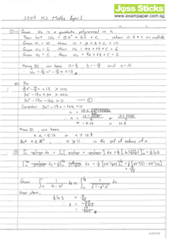OK everyone, the following H2 9740 Maths Paper 1 suggested solutions (see below) that I’ve worked out are merely what it is i.e. suggested answers.
It is most certainly not the actual marking scheme from Cambridge, so don’t be quick to assume the end of the world for your Paper 1 should some of your steps and answers be different from mine. You’ve probably been told countless times that marks will still be awarded even though your answer may not be complete, as long as you have presented your concepts and ideas clearly 🙂
Of course, do kindly point out any mistake that you may spot in the solution. [disclaimer]Afterall, they were compiled rather quickly using whatever spare time I have left after my classes these two days.[/disclaimer]
Now that we’re halfway there, it’s time to focus on the following topics in your H2 Maths Paper 2 (while the H1 folks can forget about maths for a long, long time).
Pure Maths Topics
- Differential equations, integration by parts
- Applications of Differentiation (maxima & minima problems, connected rate of change, equations of tangent & normal)
- Vectors (foot of perpendicular distance, area of parallelograms/triangles etc.)
- Functions (composite functions, inverse functions, transformations)
- Inequalities
- Complex numbers (loci – hope you have your compass with you IF it comes out)
Statistics Topics
Though questions on statistics may appear to be quite random and unforeseeable at times, do spend time to look through the statistics portion of the 2007 and 2008 H2 Maths Paper 2 to have a feel of the section. It will be manageable as long as you are confident in your probability concepts. The importance of the 3 Cs in this section i.e. reading the questions/stories Calmly, Carefully and Correctly cannot be overemphasized. Make sure you iron out each question’s logic first instead of charging in like a mad man/woman!
- Probability (Venn diagram, probability tree, conditional probability, permutations & combinations)
- Methods & techniques of sampling (do spend bit of time reading it up)
- Poisson & binomial distributions (know the conditions for Normal approximations & perform continuity correction)
- Normal distribution (linear combinations of normal variables: sums and multiples)
- Linear regression (transforming a set of non-linear data to linear form, correlation coefficient r2=b∙d)
- Sampling & hypothesis testing (Central Limit Theorem, calculation of unbiased estimates of population mean & variance from a sample)
All the Very Best for Paper 2!!!


 Miss Loi is a full-time private tutor in Singapore specializing in O-Level Maths tuition. Her life’s calling is to eradicate the terrifying LMBFH Syndrome off the face of this planet. For over years she has been a savior to countless students …
Miss Loi is a full-time private tutor in Singapore specializing in O-Level Maths tuition. Her life’s calling is to eradicate the terrifying LMBFH Syndrome off the face of this planet. For over years she has been a savior to countless students … 




















